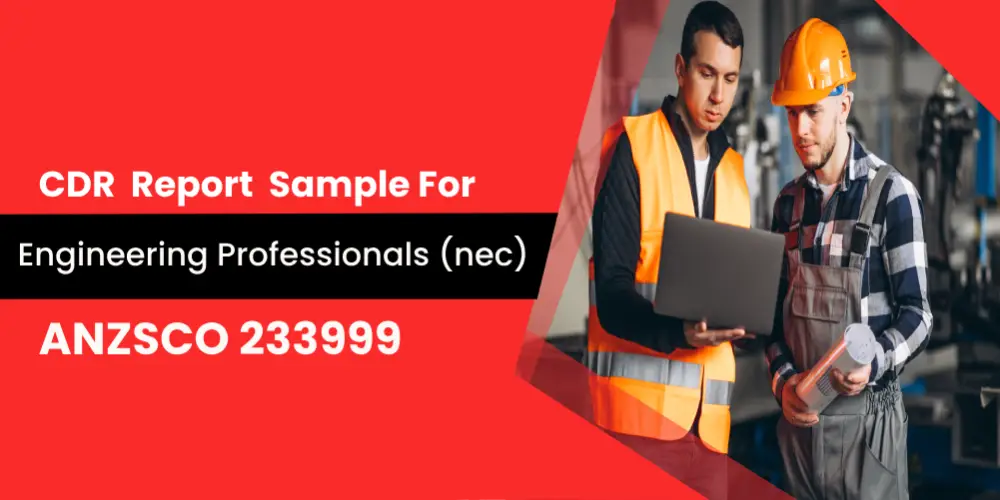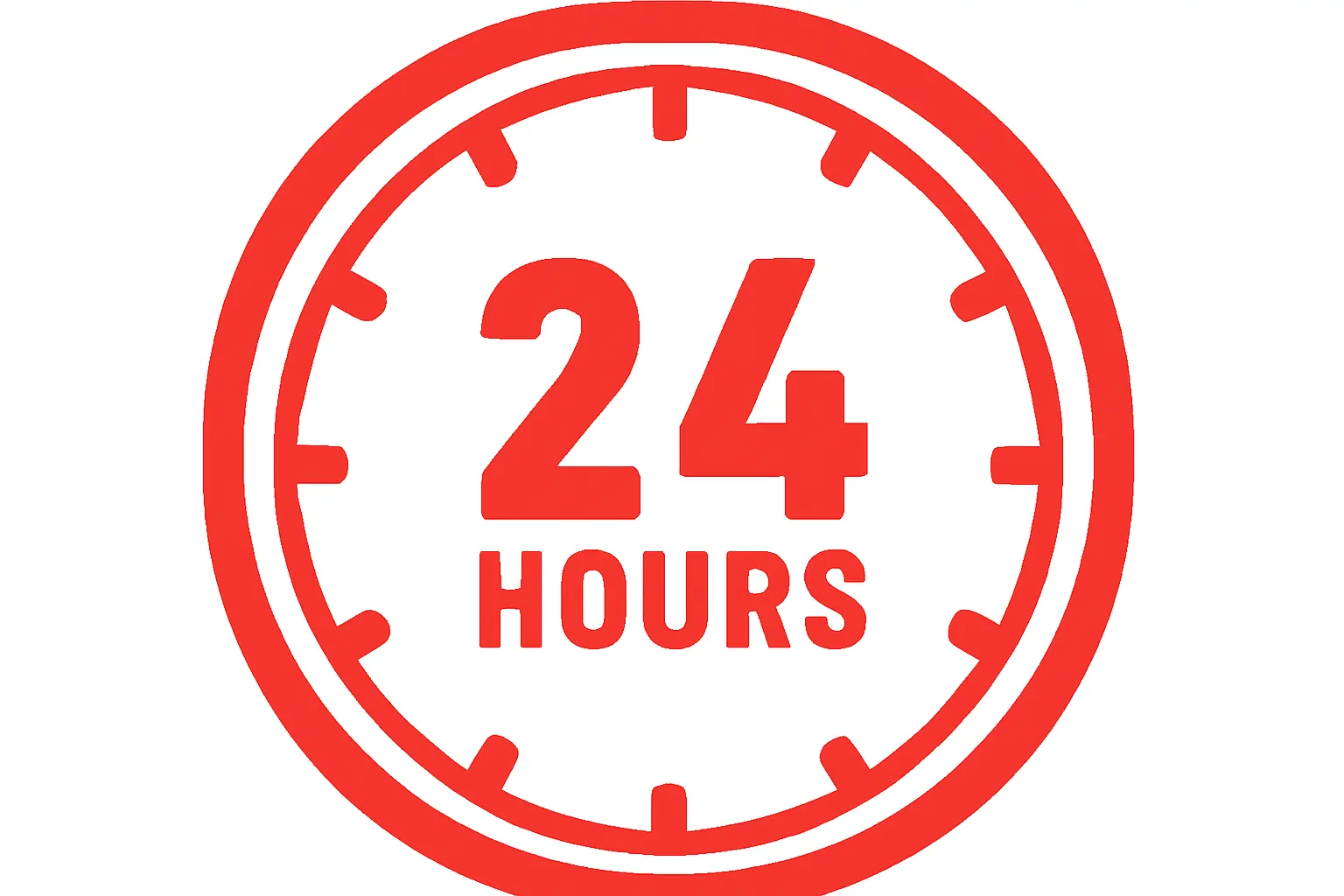Get Expert CDR, RPL, Stage 1, and Stage 2 Competency Samples for Reference
Contact to require a detailed analysis and assessment of your plan.
CDR Sample for Engineering Professionals (nec)

CDR sample for Engineering Professionals (NEC) includes all the required reports such Curriculum Vitae (CV), Continuing Professional Development (CPD), three Career Episodes (CE), Summary Statement.The content of the CDR Report Samples is given below:
Curriculum Vitae (CV):
Resume on the basis of a professional template.
Continuing Professional Development (CPD):
The sample of CPD clarifies the Engineering Knowledge of the applicant – 350 words.
Engineering Professionals Career Episode Sample 1:
“Design and Fabrication of the Screening Printing Machine” – 2020 words
Professionals Career Episode Sample 2:
“Design and Development of Vacuum Filling Machine” – 2900 words
Engineering Professionals Career Episode Sample 3:
“Design, Manufacturing and Testing of Vibrator Feeder Machine” – 2150 words
Engineering Professionals Summary Statement Sample:
“Detail explanation of all the competency element” – 2000 words.
Engineering Professional NEC Career Episode 1
Project Name: Design and Fabrication of the Screening Printing Machine
Project Type: Work Based Career Episode
Engineering Activities of Engineering Professional NEC
- To carry out the brief literature review of the screen printing machine, its working principle, components involved and form methodology on that basis.
- To select the best technique for screen printing and decided to use automation on the technique by introducing motors, actuators and sensors.
- To hold a meeting with clients to understand their requirement of machine and form design concepts.
- To conduct necessary calculations for different machine requirements.
- To select different items such as caviar beads, cracking ink, discharge ink, glitter, metallic ink, photo emulsions, squeegee etc.
- Furthermore, to purchase the materials from appropriate vendor by conducting an analysis of their previous works and the quality of products offered at a given price.
- To develop a Solid Works model of the parts and assembly of the components involved.
- To fabricate the model in the workshop according to design and calculations.
- To conduct a final test to analyze the final product and make the necessary corrections and document the final data.
- To submit the final report based on the findings to the supervisor for approval and orated the findings to the company staff to inform them about the completion of the project.
Problems & Solutions
1. Problem 1 Career Episode 1 and its solution
2. Problem 2 Career Episode 1 and its solution
Engineering Professional NEC Career Episode 2
Project Name: Design and Development of Vacuum Filling Machine
Project Type: Work Based Career Episode
Engineering Activities of Engineering Professional NEC
- To conduct comprehensive research on the design requirement of the liquid filling machine.
- To perform necessary calculations for different machine requirements such as tank diameter, vacuum pump pressure etc.
- To conduct the feasibility study by drawing different mechanical designs and discussing with the design team.
- To develop the design of the individual parts of the machine as per the specifications and assemble them using designing software such as AutoCAD and Solid
- To make the drawings of the vacuum filling machine demonstrating it’s isometric, front, top and side views and dimensioned all the parts of the machine.
- To assist in the prototype manufacturing process and inspected the manufactured components during the test.
- To instruct the technician during the grinding of the edges of the machine such that all the sharp corners are well rounded.
- To strictly forbade grinding at the internal surface of the machine since it was to be used for high vacuum applications during the perfume manufacturing process.
- To develop the PLC programming for the sequential operation of the liquid filling machine.
- To design the vacuum filling machine such that most of the components are operated by electric power rather than consuming non-renewable fuels, which creates less impact on the environment.
Problems & Solutions
1. Problem 1 Career Episode 2 and its solution
2. Problem 2 Career Episode 2 and its solution
3. Problem 3 Career Episode 2 and its solution
Engineering Professional NEC Career Episode 3
Project Name: Design, Manufacturing and Testing of Vibrator Feeder Machine
Project Type: Work Based Career Episode
Demographics:Author fulfilled this project from the organization named as “company Name” which is located in 345, Mahalwarawa, Pannipitiya, Sri Lanka. He initiated this project on 5th October 2016 and accomplished it on 5th January 2017. It took around three months to finish the project completely. The detail explanation about the designing and manufacturing of vibration feeder is given in this particular episode. The project was supervised and monitored by a senior engineer
Engineering Activities of Engineering Professional NEC
- As per the customer requirements, to conducted site survey to obtain information about the different types of powder filling methods, there principles and selected the best suited method for the process i.e. vibration feeder.
- To emerge to generate concept for the project and hence, generate methodology for the project to understand the basic work flow of the particular project on vibration feeder.
- To start to solve the necessary calculations for the different machine requirement and select the required materials for the machine using the information obtained from the site survey.
- To carry out expedience study by drawing different mechanical designs and started the main designing using solid works and auto cad designing software and he assisted during the manufacturing of a machine prototype.
- To generate machine controlling system using PLC programming and performed the testing process of the machine.
- To carry out the procedural review of each phase and at last prepared result from the project.
Problems & Solutions
Problem 1 Career episode 3 and its solution
He found that, vibrating pipes were not vibrating freely. The vibration was very stiff which slowed down the speed of the powder flow to the weighing containers. This might had happened due to the high thickness and the width of the plates which were holding the vibrating plates. He inspected the problem for certain time period and finally made a decision to reduce the thickness and the width of the plates which were holding the vibrating pipes. Just after the reduction in the thickness and the width of the plates which were holding the vibrating pipes, the speed of the powder flow to the weighing container increased at the same level I was expecting.
Problem 2 Career episode 3 and its solution
Our Strengths
At WriteMyCDR, our core objective is to help clients secure successful skill assessment approvals by delivering well-structured, guideline-compliant reports tailored for migration purposes. We are committed to providing top-quality CDR services with a focus on accuracy, professionalism, and achieving 100% customer satisfaction.

Best Price Guarantee
We offer the most competitive rates without compromising on the quality of your report.

24/7 Service
If you have any questions or issues regarding your report, our experts are here to provide guidance and support.

Plagiarism Free Work
Get a fully original CDR report crafted by experienced professionals—plagiarism-free and tailored to meet official standards.

Best Price Guarantee
We offer the most competitive rates without compromising on the quality of your report.

24/7 Service
If you have any questions or issues regarding your report, our experts are here to provide guidance and support.

Plagiarism Free Work
Get a fully original CDR report crafted by experienced professionals—plagiarism-free and tailored to meet official standards.
